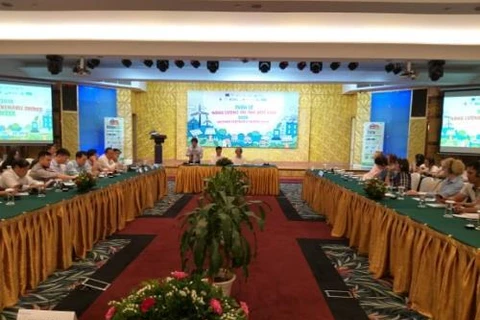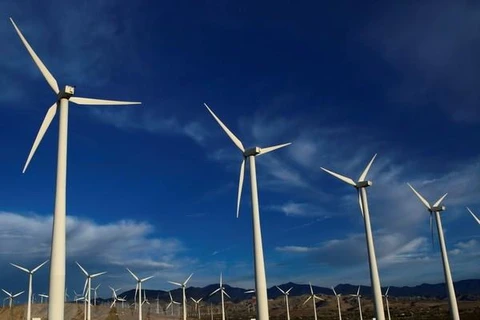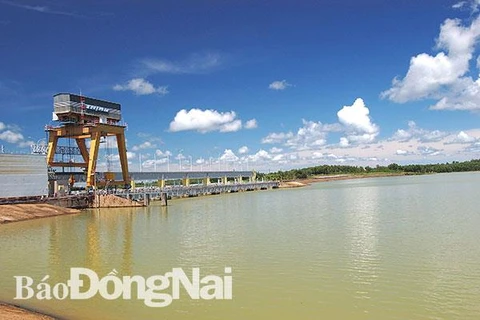Hanoi (VNA) – A conference on green finance for renewable energy in Vietnam’s industrial sector took place in Hanoi on September 18, as part of the Vietnam Renewable Energy Week 2019.
The event aimed at updating the situation of renewable energy development, opportunities and difficulties when investing in renewable energy, and green financial initiatives, particularly those targeting rooftop solar power.
At the conference, Simon James, Climate Change and Energy Adviser at the World Wildlife Fund (WWF) in Vietnam, said renewable energy has great potential to meet growing demand if it obtains appropriate policies and financial support.
According to the WWF’s energy outlook, a transition to 100 percent renewable energy by 2050 is possible.
In 2018, a total of more than 3,460MW of renewable energy was installed; 93 solar power projects and 54 wind power projects with total capacity of more than 10,000MW have been planned in Vietnam.
However, one of the challenges for the renewable energy industry is the shortage of capital investment. Currently, investment costs are still high for some new technologies; therefore, renewable energy still struggles to compete with fossil fuels.
Along with that are internal weaknesses such as lack of qualified human resources, poor grid capacity and complicated regulatory frameworks causing many large projects to be delayed.
It is forecast that from now until 2030, Vietnam's economy will continue to grow at a high rate, from 6.5 percent to 7.5 percent per year. The Government of Vietnam has a number of policies to encourage and promote the development of renewable energy, gradually reducing the dependence on traditional forms of power generation, so as to protect the environment and for sustainable development.
In order to meet the electricity demand, Vietnam needs about 7.8-9.6 billion USD per year from 2016 to 2030.
James said, according to estimates, the cost of renewable energy projects is decreasing, the construction of solar and wind power plants will be cheaper than building coal power plants after 2020.
However, it is necessary to create incentives for investors such as FIT (feed-in tariff) prices, preferential credit interest rates, or land use tax exemption and long-term power purchase contracts, James added.
Sharing experiences in developing renewable energy and green financing in the region, taking experience from the Philippines, Marlon Joseph Apanada, specialist of Green Financial Initiative, and director of Allotrope Partners, Philippines, said the total value of outstanding loans from Green and Sustainable Bonds of ASEAN region is up to 1.6 billion USD; in which, construction is the category with the largest amount of green bond funding (43 percent by market volume), followed by energy at 32 percent.
Apanada also expressed a hope to strengthen the capacity of Southeast Asian financial institutions to actively participate in the green financial system, with the ultimate goal of reducing capital investment in factories using traditional fossil fuels, while rapidly promoting and scaling up investments in renewable energy./.

Vietnam Renewable Energy Week launched in Hanoi
Vietnam Renewable Energy Week 2019 was launched in Hanoi on September 17 as part of efforts to implement the Government’s policies on renewable energy development.






















